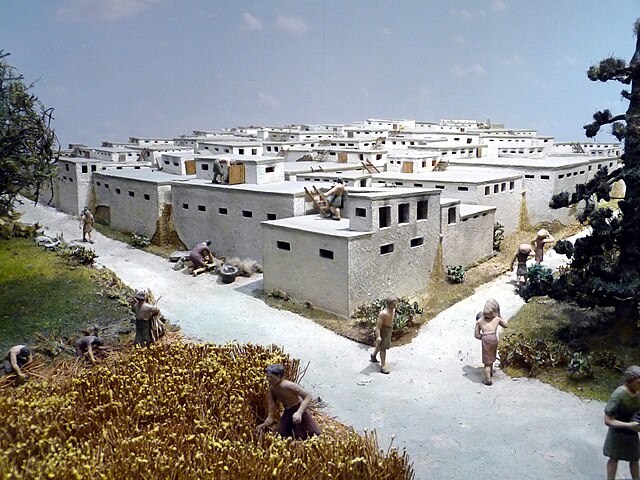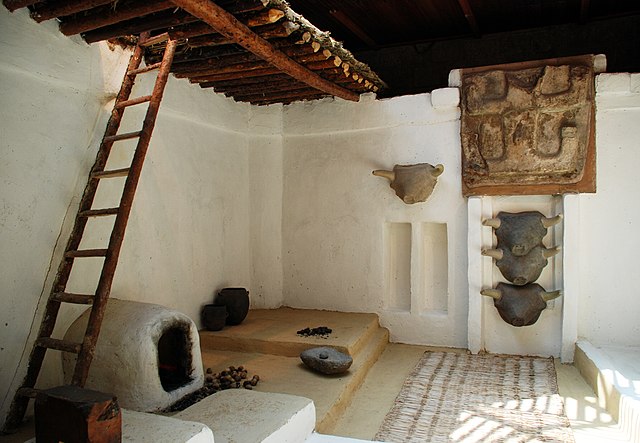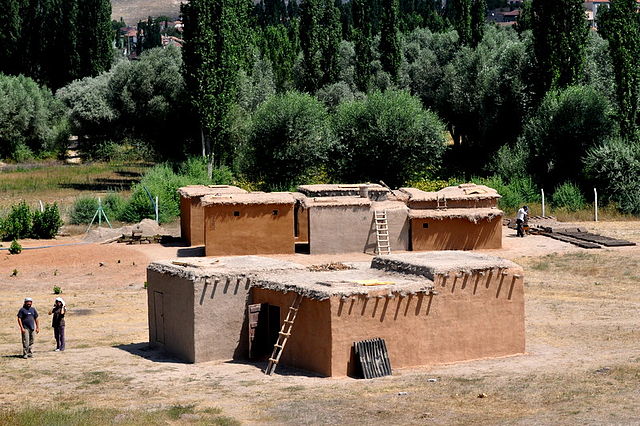Çatalhöyük is a tell of a very large Neolithic and Chalcolithic proto-city settlement in southern Anatolia, which existed from approximately 7500 BC to 6400 BC and flourished around 7000 BC. In July 2012, it was inscribed as a UNESCO World Heritage Site.
Ruins of Çatalhöyük
Calibrated Carbon 14 dates for Çatalhöyük, as of 2013.
Model of the neolithic settlement ( 7300 BC ) of Catal Höyük
On-site restoration of a typical interior.
The Neolithic or New Stone Age is an archaeological period, the final division of the Stone Age in Europe, Asia and Africa. It saw the Neolithic Revolution, a wide-ranging set of developments that appear to have arisen independently in several parts of the world. This "Neolithic package" included the introduction of farming, domestication of animals, and change from a hunter-gatherer lifestyle to one of settlement. The term 'Neolithic' was coined by Sir John Lubbock in 1865 as a refinement of the three-age system.
Reconstruction of Pre-Pottery Neolithic B housing in Aşıklı Höyük, modern Turkey
Reconstruction of a Neolithic farmstead, Irish National Heritage Park. The Neolithic saw the invention of agriculture.
An array of Neolithic artifacts, including bracelets, axe heads, chisels, and polishing tools.
The Urfa Man c. 9000 BC. Şanlıurfa Archaeology and Mosaic Museum.








